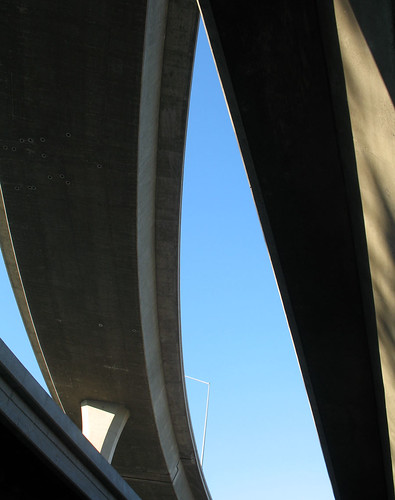
L.A.’s initial growth comes from people who oppressed a marginalized group for financial gain and power. While this finding is unsettling, it is hardly original and at least as Angelenos we can pride ourselves in the fact that we did not begin this trend. In his book, Imagining Los Angeles, David Fine, in delves into this idea more in-depth, “The old Californios, the ‘first families’ who held the land grants, were unable to defend their claims in Anglo courts – unable to pay the legal fees much less to understand the laws that were disenfranchising them – and so lost their lands, piece by piece, to Yankee speculators,”(Fine 6-7). And after these “first families” are eliminated, the possibilities for this space called Los Angeles become literally limitless. For the love of God, we brought irrigation to the desert. Railroads initially created a way for Americans to get to the city, “the Southern Pacific in 1876 and the Santa Fe in 1886,” coupled with, “…land speculators, subdividers, city boosters, and railroad tycoons,”(Fine 4) created a mixture from which Los Angeles did not have a chance to be unsuccessful.
What I personally found to be so interesting is the fact that while the railroad brought people to the city, it is the invention of the automobile that designed the city’s layout. Fine writes, “In contributing to the decentralization of the city, the automobile diminished the central city’s hegemony,”(Fine 9). The same invention that plagues our freeways now is also responsible for the disjointed nature of Los Angeles and its surrounding suburbs. The fact that the city is so disjointed from its genesis speaks to the fact that Los Angeles can still be considered as divided. People from the South Bay dread having to go five miles East, because God forbid they find themselves in Hawthorne. Celebrities that live in the Hollywood Hills never venture to downtown; exceptions include filming and soup kitchen publicity stunts.
Another interesting development for the city is also probably the most well-known: the development of the film industry. The obvious reasons for this include: “the region had plenty of sunshine, open space for outdoors shooting, and a varied landscape,”(Fine 12). The final reason is particularly sinister, and contributes to the over-all “scummy nature” of Angelenos. Los Angeles, “also had the appeal of being 3000 miles away from the Edison patents,”(Fine 12). First we remove landowners from the city by means of forcefully taking their land, and then our major industry exploits the ingenuity of one man’s developments.
But remember, to me, Los Angeles is like a younger sibling; I can trash on it as much as I want but the minute a “non-local” wants to say horrible things about it, I feel the need to defend this city. I feel compelled to defend the boosters, the tycoons, the celebrities. But I also feel like we can’t turn a blind eye to all the horrible crap that is a part of our city’s development. So what’s the “fair” thing to do? I guess it means just loving Los Angeles for what it is and for what it has become, while acknowledging the glaring faults as well.
--Hailey Hanann
caption: I-8 Meets California 125
credit: Allan Ferguson, flickr creative commons
No comments:
Post a Comment